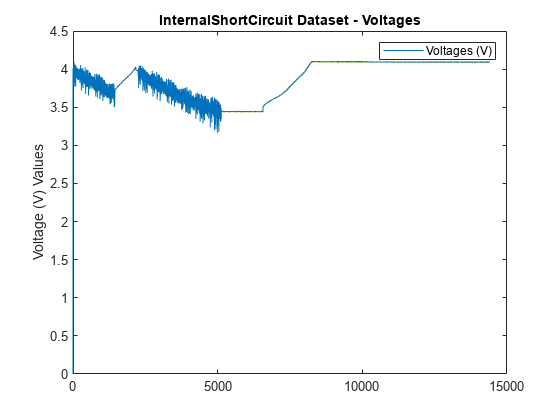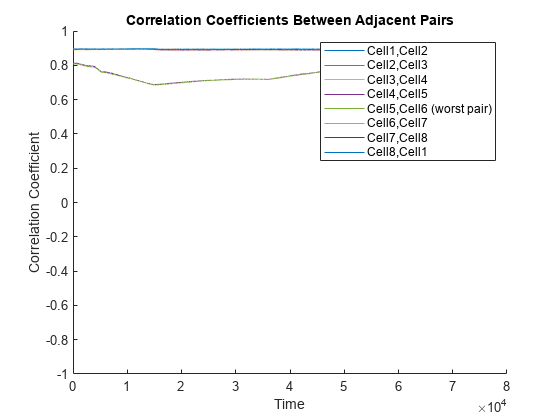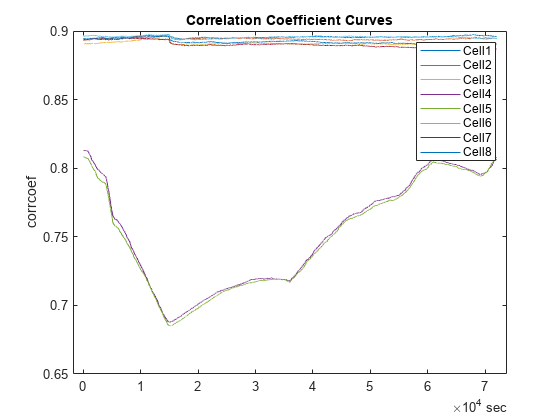adjacentPairCorrelationModel
Identify worst cell relative to other cells in serially connected lithium-ion battery pack
Since R2023a
Syntax
Description
adjacentPairCorrelationModel( analyzes
the battery data in data)data to determine the voltage correlation
coefficients between adjacent cells in a serially connected lithium-ion battery pack, and
plots the results.
The lower the correlation coefficient is between a pair of adjacent cells, the more likely it is that one of the cells in the pair has a fault condition, such as an internal short circuit [1]. The plot legend indicates the cell pair with the lowest correlation coefficients. Using this syntax also displays the index of the worst cell in the pack.
The algorithm imposes no restrictions on battery activity during the collection of
data. The battery can be in any operating sequence, including
charging, discharging, and standby phases.
adjacentPairCorrelationModel(
incorporates additional options specified by one or more name-value arguments. For example,
increase the data,Name=Value)SquarewaveAmp argument to a value greater than the default
value of 0.003 to accommodate higher levels of noise when the batteries are at rest.
Examples
Input Arguments
Name-Value Arguments
Output Arguments
References
[1] Xia, Bing, Yunlong Shang, Truong Nguyen, and Chris Mi. “A Correlation Based Fault Detection Method for Short Circuits in Battery Packs.” Journal of Power Sources 337 (January 2017): 1–10. https://doi.org/10.1016/j.jpowsour.2016.11.007.
Extended Capabilities
Version History
Introduced in R2023a




